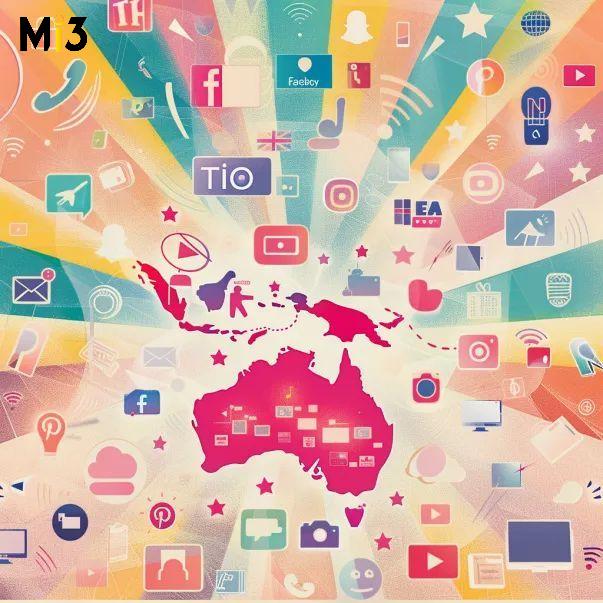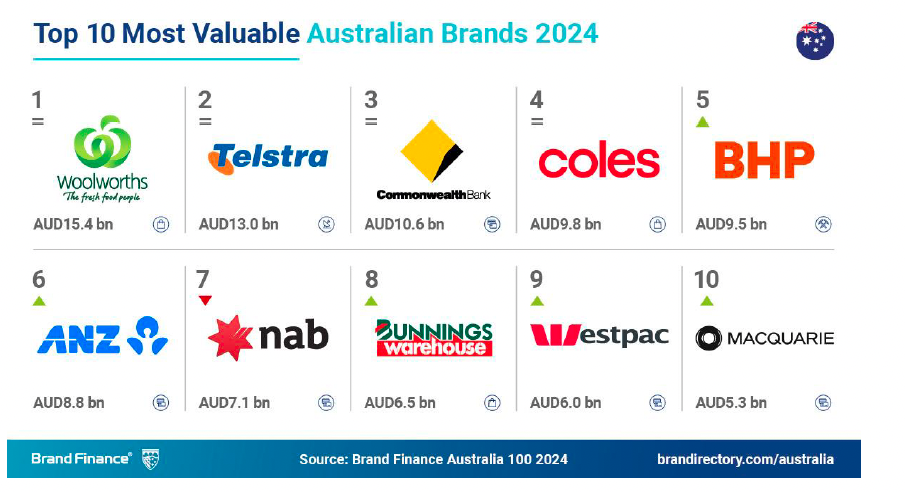Solving the future consumer commerce equation: Active community, accessible credit and AI connection are all musts for retailers, say CX, finance, payments and academics – and lead to a more human approach

What you need to know:
- The future of commerce by 2030 will be defined by a consumer’s community, values, and experiences, according to a new The Future Laboratory.
- As a result, the report has suggested social commerce, ‘incentivised ethics’, and retail as a ‘third space’ combining community, leisure, entertainment, and commerce will emerge as critical components of next-generation commerce approaches.
- For E&S GM of customer experience, Barry Mowszowski, it’s too simplistic to suggest this is just a younger generational shift – most of us would prefer demographics to be superseded by our personalities, preferences, and community alignments. “People are identifying very differently but they’re creating clusters of community. The most important thing to understand is that’s just going to accelerate. So why are we trying to typecast and shove people into little boxes? Because it ticks our compliance,” he said.
- In complement, The Future Laboratory report says the industry must look to not only meet these distinctly human preferences, but also empower consumers through more equitable finance tools, and redefine the retail experience using hyper-personalised and empathetic technologies.
- For Wizard Home Loan Founder and noted businessman, Mark Bouris, the shift hasn’t yet happened in the lending space, a problem he attributed to the “judgemental process” applied to lending in the current market. Per Bouris: “These players need to start to partner with the thoughts, desires, and wishes of the consumer/borrower. It’s not just in terms of short-term money or small amounts of money but in terms of borrowing the money to buy a home.
- This combination of accessibility, community, and the search for the authentic self is also why next-generation forms of accessible credit, like Afterpay, are gaining ground, Mowszowski said. “You’ve got an audience that’s bored shitless, and an audience dissatisfied with the platforms they’re engaging in. That’s why the momentum is going through to the Afterpays, who curate, understand, and nurture that audience and cocreate with you daily.”
- With AI and new technologies all promising tools to help foster more empathetic engagement against a customer’s needs, Dr. Catherine Ball encouraged more players to explore startup incubation hubs to get closer to emerging technologies that could help achieve ever-higher personalisation in retail experiences.
The future of commerce by 2030 is about community, values and experiences, empowering consumers through more equitable finance tools, and redefining retail using hyper-personalised and empathetic technologies, according to a new The Future Laboratory penned report. In other words, a shake-up of what most retailers, financial providers and stakeholders engage in now, speakers at an Afterpay event in Sydney launching the report agreed.
At a top-line level, the ‘Solving the Consumer Equation: Future Trends 2030’ report urges retail brands to trade-in traditional transactional emphasis and ‘hard sell’ for a ‘social retail’ where they’re directing contributing to cultural and community connection. That’s because ecommerce is increasingly about creating holistic spaces where like-minded individuals can connect and express their values, the report posited. The Future Laboratory highlighted Tint figures showing 74 per cent of people are more likely to purchase more frequently because of an online brand community.
As a result, social commerce, ‘incentivised ethics’ and retail as a ‘third space’ combining community, leisure, entertainment and commerce will emerge. Here’s just one number making the point: McKinsey has forecast live shopping will constitute one-fifth of retail by 2026, with US sales expected to grow from the equivalent of AUS$30bn in 2022 to AUS$103bn by 2026.
‘When you move from a transactions model you are moving from a point-of-sale perspective to a point-of connection one,’ said retail designer, futurist and author, Ibrahim Ibrahim, quoted in the Future Laboratory report. ‘This means that we need to work with our teams to speak like a magazine, change like a gallery, build loyalty like a club, share like an app, seed like an incubator and engage like a show.’
People are identifying very differently but they're creating clusters of community. The most important thing to understand is that's just going to accelerate. So why are we trying to typecast and shove people into little boxes? Because it ticks our compliance.
The customer paradox
As GM of customer experience for kitchen, bathroom, and laundry appliance retailer E&M, Barry Mowszowski, told attendees, there’s quite the “customer paradox” going on.
“You’ve got customers who are in love with sustainability, who crave governments to care as much as they do. And you’ve got businesses who are innovating,” he said in a presentation detailing key findings that also reflected Mowszowski’s opinions on where retail is headed. E&S is an Afterpay B2B customer.
“But then you have customers who just want to belong to a community, who don’t identify as male or female or identify as different genders and sexes but increasingly with the community.”
In complement is the rise of “ephemeral culture”. In Australia, 73 per cent of Gen Z feel this pressure to keep up with the latest topics, trends, and content because they don’t want to be seen as being out of touch. Yet algorithms are flattening culture and introducing a sea of sameness to the mix, hindering authentic self-expression, the report stated.
“An insight like that could look flippant,” Mowszowski said. “But if you think about what’s happening on these platforms, there’s this trendification of culture. Someone sends you a photo of a dog, you’re then spammed by dog advertising even if you hate dogs.
“The irony with such behaviour though, is you’ve got an audience that’s bored shitless, and an audience dissatisfied with the platforms they’re engaging in. That’s why the momentum is going through to the Afterpays, who curate, understand, and nurture that audience and co-create with you daily.”
There’s another “strategic migraine” in this mix for retailers: New life trajectories. “If any of you have managed Gen Zs, you would know they could be like wild feral possums. But really, the problem is not them, the problem is societal understanding of the structures of what their needs actually are,” Mowszowski said.
He noted the number of people who left their employment for a better job increased from 250,000 to 334,000 in 2023. “God knows what that number is going to look after that in 2024 and 2025. I work with real estate developers who are building a product their customer does not want to buy,” Mowszowski continued.
“The right culture is a magnetic pool versus what governments and the banks are actually doing, which is threatening you with your employment. It’s always a consistent theme – middle age to near-death white guys, protesting on why their employees should come back into work.”
We need as brands in my game to start to adjust our thinking in particular for Gen Z, very few of which apply for loans with us, but who we know from our research would love to have a home, or at least at dwelling… we have to start making sure we come up with solutions for them and importantly, we need to go along on their journey. It’s not what many of us are thinking at the moment.
New lines of credit
Access to capital and credit is also fundamentally changing – another key finding of The Future Laboratory report. For Mowszowski, buy now, pay later (BNPL) services like Afterpay are new forms of credit systems necessary to make finances more accessible. Plend research showed more than 20 million people’s financial situations are misrepresented because of outdated or inaccurate records. Plend also found 28 per cent of people feel locked out of the financial system, a number that skyrockets to 73 per cent in the 18-to-34-year-old age bracket. Afterpay’s own research found seven in 10 global respondents see flexibility as important to their financial decisions.
“Financial empowerment is a new priority, as economic shifts give way to disruptive, entrepreneurial mindsets looking to redefine when it means to be well-thy,” the report authors stated. “By 2030, there will be an increase in human-centric tools and metrics in this finance sector, credit services will be more intuitive, and people will have access to a wider pool of financial opportunities.
“A human-first approach is needed that upends traditional models, including a bespoke way of building credit scores to more trusting lenders. People want financial service providers to work in tandem with their values and behaviours.”
Speaking on a panel at the Afterpay event, Mark Bouris, the founder of Wizard Home Loans, exec chair of Yellow Brick Road, former The Apprentice host and noted business entrepreneur, agreed lenders such as the banks, payment, and credit providers must rethink the way they lend money.
“These players need to start to partner with the thoughts, desires, and wishes of the consumer/borrower,” he said. “It’s not just in terms of short-term money or small amounts of money, but in terms of borrowing the money to buy a home. Most young people in Gen Z think they’ll never be able to buy a home.
“Largely, it’s because of the judgemental process. I saw the word of ‘power’ come up on the screen. But I would like to change that word from ‘power’ to ‘non-judgment’. I mean non-judgment in a typical, statistical sense. It’s not just based on things like: Have they got a job working in the tax office, and have they been there for the last five years? Do they live in one of the metropolitans in Australia? Are they borrowing less than 80 per cent? Are they just male? Or importantly, are they a couple and not a female who might have a baby?
“And given our extra longevity, which by the way, is a big thing these days – we’re going to live longer and there are people out there promoting how we live longer – how do we talk to Gen Z about how you’re going to afford to live longer? How are we going to tell them we are interested in helping them through that process of living longer and therefore, living better, and living in an affordable way? It’s not just having a house but having enough money to help them through that process to have enough money to live the extra 30 years.”
The answer for Bouris lies in the consumer’s goals and education, with lenders sharing expertise while personalising to their needs.
“Take the fact you’ll be living to 100: Did you know current superannuation only allows you to live comfortably until you’re 81?” he said by way of example. “We need as brands in my game to start to adjust our thinking in particular for Gen Z, who very few of which apply for loans with us, but who we know from our research would love to have a home, or at least at dwelling… we have to start making sure we come up with solutions for them and importantly, we need to go along on their journey. It’s not where many of us are thinking at the moment.”
How do you get a customer who is about to go to a store, knows all the clothes they reckon will suit her are hanging up in her size, ready to go, with a cup of her favourite tea, and the sales assistant is ready to talk to her? This is something called a dyad – when humans use artificial intelligence to increase rapport and relationship with someone.
Smart-sumption
The technology driving future commerce is the third big spoke in this wheel. The Future Laboratory report details several artificial intelligence tools, technologies, and innovations coming into the commerce space. Among them are improved use of chatbots, AI that hyper-personalise experiences and taps sentiment analysis to drive more ‘personality purchasing’, and seamless online / in-store / back online customer loops.
“The best businesses by 2030 will understand there’s a connective tissue between sales and after-sales. Most businesses in this country, do not see that connection. They think it’s actually two fragmented universes,” commented Mowszowski. “Smart-sumption comes from understanding how to leverage technology to deliver much more intimate, intuitive understanding experience. Not an augmented one that’s replacing staff.”
While connected commerce and ‘phygital’ is clearly emphasised in The Future Laboratory, innovation doesn’t have to be overly complex, Mowszowski argued.
“Take Lululemon: There’s nothing digital about it, yet it’s been growing at a clip of 25 to 30 per cent year-on-year in a retail category,” he said. “There’s not even a hint of digital – they’ll ask you for your email address when you pay, but it’s not for loyalty, it’s just in case something goes wrong. However the role of the educator is a meaningful value add. Someone’s there to enable you to buy rather than to sell. That is a powerful part of their culture.”
But if you do leverage technology given where AI is going, it’ll all be with the aim of recognising and respectfully solving for the customer.
“Cosmetic brands are utilising… AI technology to understand your level of hydration through a photo, your anxieties, or joint neuroses and to customise a template. Personality testing is going to be at the forefront of meaningful transactions with customers,” Mowszowski said.
Futurist and academic, Dr Catherine Ball encouraged more retailers to explore startup incubation hubs to get closer to emerging technologies that could help achieve ever-higher personalisation in retail experiences.
“Immersify is an Australian startup allowing you to build that personalised, AI-backed, Web 3 system of sale in the premium market – think that Sass & Bide level. How do you get a customer who is about to go to a store, knows all the clothes they reckon will suit her are hanging up in her size, ready to go, with a cup of her favorite tea, and the sales assistant is ready to talk to her?” she asked. “This is something called a dyad – when humans use artificial intelligence to increase that rapport and relationship with someone. Immersify already exists.”
Hive meanwhile has a smart supply chain solution to show your brand employs no slavery, or where products come from, Dr Ball continued.
“It’s very smart to get very early doors to see the idea machines happening from some of these bright sparks,” she added. “95 pr cent of startups fail because they have no business model. But how many of those orphan startups would have actually fitted for you as part of your business model?”





